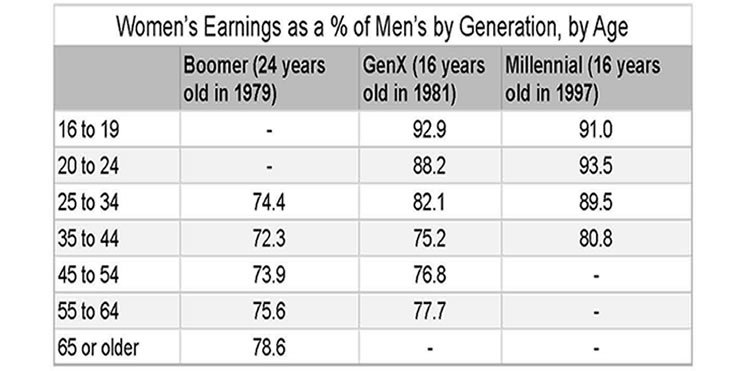The State of Gender Pay Equity, Part 2 of 4
Pay equity will get better for the next generation, but not for you.
A controversial headline to say the least, but yes, the data does show this. As discussed in Part 1 of this series , gender pay equity has improved over time from an overall perspective, but digging deeper into the data, it looks different depending on how old you are.
Let’s start by looking at data for the youngest workers, 16 to 19 years old. The pay gap is pretty small (hovering around 90% of men’s pay), and has been small for the past 40+ years. At the entry level, lower wages, there is less imbalance between genders.
When we look at older workers, those in their peak earning years, things look very different. The pay equity gaps were larger in 1979, and have shrunk over time. What is interesting, though, is that there is a big difference in pay equity that has always existed between women under 35 and those older than 35. The pay equity gap is much larger for women 35 and older, making less than 80 cents on the dollar in 2021, whereas under 35 they make closer to 90 cents. For some reason, that gap has persisted for 40+ years.
We can also use this exact same data to see how the pay equity gap looks for someone as they age and progress through their career. Take a Baby Boomer, for instance, who would be 24 years old in 1979, when the data series started. In the table below you can see there is really no meaningful improvement in the pay equity gap as they grow older and advance in their careers. You can see, however, that each subsequent generation, at the same age, experienced a smaller gap. GenX is better off than Boomers, and Millennials are better off than GenX. For example, looking at 25 to 34 year olds, the gap was about 25% for Boomers, then 17% for GenX, then 10% for Millennials. There is meaningful generational improvement.
What is rather surprising, though, which is very clear from the data on GenX and Millennials, is that despite experiencing better pay equity gaps compared to the previous generation, as they age and progress through their careers, the pay gap doesn’t get smaller, it gets bigger. And there seems to be a big change mid-career, when they get to their late 30’s.
In the next part of this series, we will dig into some interesting findings on pay equity by ethnicity/race. Check out part 3 here.


